Stop and ponder this for a moment: In the American River passing through the Sacramento metroplex, giant fish swim by after surviving three or more years in the wild Pacific Ocean. These are our native fall-run chinook salmon. For thousands of years — long before there was a Sacramento — they have migrated from the American River to the Pacific Ocean and back on a three- to four-year cycle.
These fish are the basis for commercial and recreational salmon fishing in California and all across the West Coast. According to the California Department of Fish and Wildlife, California’s commercial and recreational salmon fishery generates more than $500 million in revenue annually. If you buy wild-caught salmon at a restaurant or farmer’s market in California, it may have originated in the American River or another Sacramento River tributary.
Sacramento is blessed to be one of the few major metro areas in America with a wild salmon run in our midst. What does this mean? It means that amid our highways, neighborhoods and high-rise buildings, there remains an ecological cycle integral to our natural world. Because salmon are such a rich source of nutrients, their annual return to the river has fed humans, animals and even plants for millennia. It’s a cycle deeply intertwined with human health and prosperity.
Unfortunately, our salmon are suffering this year. These majestic fish — each over 2 feet long and weighing over 20 pounds as adults — have fought their way back to the Lower American River from the ocean only to find hostile spawning conditions.
Salmon need certain water quality conditions to thrive and reproduce. Most importantly, they need clean water, adequate flow and cold water. They also need a certain type of gravel riverbed to lay their eggs and ensure baby fish can survive. Steelhead trout, a cousin species that also relies on the American River, need similar conditions.
All these factors are also integral to human health. We need clean water, as well as an adequate supply of water to meet our basic needs. That’s why we pay attention to salmon. And that’s why it’s important that we take action to help them.
The Sacramento Water Forum has worked for well over a decade with local, state and federal partners to improve chinook salmon and steelhead spawning and rearing habitat in the American River and recently launched a new project at Ancil Hoffman Park in Carmichael. Teams are laying approximately 15,800 cubic yards of clean gravel into the flowing river. In doing so, we can improve natural spawning habitat that was once replenished naturally in the river, before dams cut off downstream movement of this vital material.
Since 2008, the Water Forum and its federal, state and local partners such as the U.S. Bureau of Reclamation and Sacramento County Parks have invested more than $7 million to create over 30 acres of spawning beds in the lower American River. Previous habitat projects have demonstrated measurable results, including surges in native fish nests in areas where there were very few before restoration.
California’s frequent cycles of drought make these projects even more critical to helping salmon and steelhead: One year of severe drought may prevent the dramatic results that we’re used to seeing from these enhancements, but habitat restoration is a multi-year endeavor focused on increasing survival for many generations.
As we all do our part to get through the drought, remember the salmon: Their well-being is an important clue about our own health — and a hint about problems yet to come. If we can help the salmon thrive, so will our region.
Rich Desmond is a Sacramento County supervisor representing Carmichael and Ron Stork is a senior policy staffer for Friends of the River.
–
Stay up to date on business in the Capital Region: Subscribe to the Comstock’s newsletter today.
Recommended For You
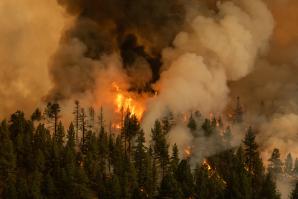
Earth, Wind and the Fire Next Time
Climate change is a factor in California’s rampaging wildfires, but not the only one
Due to human influence, three primary ingredients of wilderness fires are on the rise: the accumulation of biofuels in the forest, rising heat of the planet as a whole, and an ineffective political system of fire management.
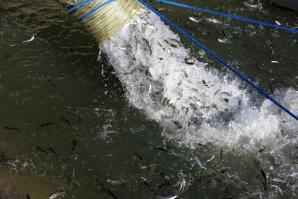
The Flip-Side of Fish Hatcheries
Originally intended to preserve salmon, are hatcheries harming the species?
In 2009, fewer fall-run Chinook salmon returned to spawn in the Central Valley than have ever been recorded before. Just 50,000 adult fish spawned that autumn in the entire Sacramento-San Joaquin river system — a tenth of how many Chinook migrate inland in a good year. The event was an ecological and economic disaster that prompted officials to shut down California’s ocean fishing season for two years.
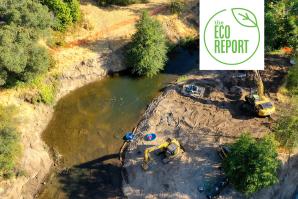
The City of Roseville Restores Its ‘Crown Jewel’
The Dry Creek restoration project is revitalizing habitat
for chinook salmon and steelhead trout.
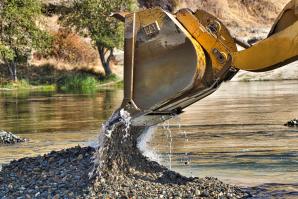
Fishy Repairs: The Salmon and Steelhead Restoration Project
As part of the Salmon and Steelhead Restoration Project, workers haul rubble to the shores of the American River just downstream from the Nimbus Dam, in an effort to restore streambeds.



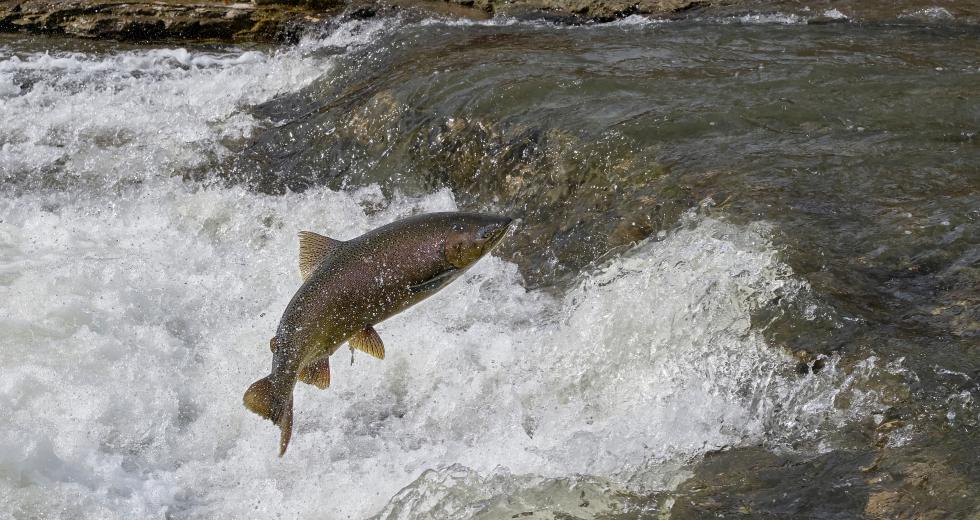
Comments
Thank you so much, Mr. Desmond and Mr. Stork, for this excellent article. It is very important for everyone, particularly Sacramento residents, to understand why we must maintain flow levels and temperature levels in the river. Your joint effort is a very nice example of people from different organizations working together on an issue of mutual concern. Gwynne
My understanding is that the recreational and commercial salmon industry in California is valued at 1.5 billion annually, not to mention the the value of all the smiles and happiness of the thousands of Californians salmon fishermen and women who pursue these magnificent creatures at sea, and that is priceless. Moreover, it is not just the rivers that need to be protected, but ever creek, stream and water way that supports spawning salmon. The state, feds, industry and the utility companies have the responsibility to protect our waterways, and in turn ensure the health of it's people and the land that we all depend on. It took nearly 15 years to modify a dam in Lincoln, California that would eventually allow king salmon and steelhead trout to reach their historic spawning grounds in Auburn. Yet, Nevada Irrigation District fought the good people in the region to the very end, and how dare they claim to be good stewards of the land. We the people need to take matters into our own hands when it comes to protecting our most values recourses, because industry (Including the corporate almond producers) cares more about their shar holders than the health of the people. Fact!